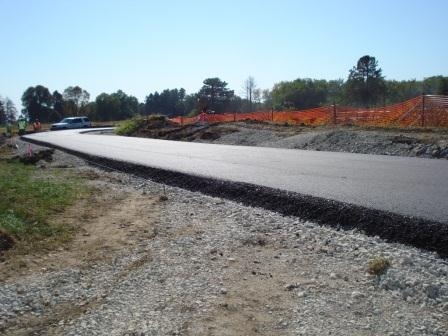Today, I saw this blogpost by Dr.Adam Ruben in social media via a researcher. It was very funny, yet nailed the truth quite strong. Reading through the long list, I kept saying “Yes, that true!”. So, here I am sharing the list with you, those highlighted in bold are mine. Those in italics are not completely true to me. Mea Culpa! 🙂
I don’t sit at home reading journals on the weekend.
I have skipped talks at scientific conferences for social purposes.
I remember about 1% of the organic chemistry I learned in college. Multivariable calculus? Even less.
I have felt certain that the 22-year-old intern knows more about certain subjects than I do.
I have avoided eye contact with eager grad students while walking past their poster sessions.
When someone describes research as “exciting,” I often don’t agree. Interesting, maybe, but it’s a big jump from interest to excitement.
Sometimes I see sunshine on the lawn outside the lab window and realize that I’d rather be outside in the sun. [TOTALLY!!!]
I have gone home at 5 p.m.
I have asked questions at seminars not because I wanted to know the answers but because I wanted to demonstrate that I was paying attention.
I have never fabricated data or intentionally misled, but I have endeavored to present data more compellingly rather than more accurately.
I have pretended to know what I’m talking about.
I sometimes make superstitious choices but disguise them as tradition or unassailable preference.
I like the liberal arts. [No, I LOVE them!]
When a visiting scientist gives a colloquium, more often than not I don’t understand what he or she is saying. This even happens sometimes with research I really should be familiar with.
I have enjoyed the fruits of grade inflation.
I have called myself “doctor” because it sounds impressive.
I dread applying for grants. I resent the fact that scientists need to bow and scrape for funding in the first place, but even more than that, I hate seeking the balance of cherry-picked data, baseless boasts, and exaggerations of real-world applications that funding sources seem to require.
I have performed research I didn’t think was important.
In grad school, I once stopped writing in my lab notebook for a month. I told myself I could easily recreate the missing data from Post-it notes, paper scraps, and half-dry protein gels, but I never did.
I do not believe every scientific consensus.
I do not fully trust peer review.
When I ask scientists to tell me about their research, I nod and tell them it’s interesting even if I don’t understand it at all.
I never was never interested in Star Wars. [I don’t know why Scientists = Star Wars Fan!]
I have openly lamented my ignorance of certain scientific subtopics, yet I have not remedied this.
I have identified steps in lab protocols that can be optimized, yet I have not optimized them.
I have worried more about accolades than about content.
If I could hand over my lab work to a robot, I’d do it in a second. Then I’d resent having to maintain the robot.
During my graduate-board oral exam, I blanked on a question I would have found easy in high school.
I can’t name four papers my grad-school lab published, but I can describe the details of our entry every year into the Biology Department Holiday Party Dessert Competition.
I have feigned familiarity with scientific publications I haven’t read.
I have told other people my convictions, with certainty, then later reversed those convictions.
I have killed 261 lab mice, including one by accident. In doing so, I have learned nothing that would save a human life. [No, not 261. About 20 in high school.]
I can’t get excited about the research to which some of my friends and colleagues have devoted their lives.
I can’t read most scientific papers unless I devote my full attention, usually with a browser window open to look up terms on Wikipedia.
I allow the Internet to distract me.
I have read multiple Michael Crichton novels.
I have taken food from events I did not attend and mooched swag from vendors I did not talk to.
I have used big science words to sound important to colleagues.
I have used big science words to sound important to students.
I have used big science words to sound important to my 3-year-old daughter.
I sometimes avoid foods containing ingredients science has proved harmless, just because the label for an alternative has a drawing of a tree.
I have miserably failed exams in the exact field I chose to study.
I own large science textbooks I have scarcely used. I have kept them “for reference” even though I know I’ll never use them again. I intend to keep them “for reference” until I die.
I have abandoned experiments because they did not yield results right away.
I own no wacky science ties.
I want everyone to like me.
I have known professors who celebrate milestone birthdays by organizing daylong seminars about their field of study. To me, no way of spending a birthday sounds less appealing.
Sometimes science feels like it’s made of the same politics, pettiness, and ridiculousness that underlie any other job. [Absolutely!]
I decry the portrayal of scientists in films, then pay money to go see more films with scientists in them.
I have worked as a teaching assistant for classes in which I did not understand the material.
I have taught facts and techniques to students that I only myself learned the day before.
I find science difficult.
I have delusions that people will read this confession and applaud my bravery for identifying a universal fear.
I am afraid that people will read this confession and angrily oust me from science, which I love. [Yes, Maybe.]
27 confessions!!!! So, what about you? 🙂
![]() The change in structural forms of a protein is not a trivial problem. We would need to generate ensembles of protein structures for many purposes. 1) Understand conformational transition paths, 2) Generating more realistic receptors for docking 3) in turn understand the flexible and rigid parts of the protein, and few other applications.
The change in structural forms of a protein is not a trivial problem. We would need to generate ensembles of protein structures for many purposes. 1) Understand conformational transition paths, 2) Generating more realistic receptors for docking 3) in turn understand the flexible and rigid parts of the protein, and few other applications.












